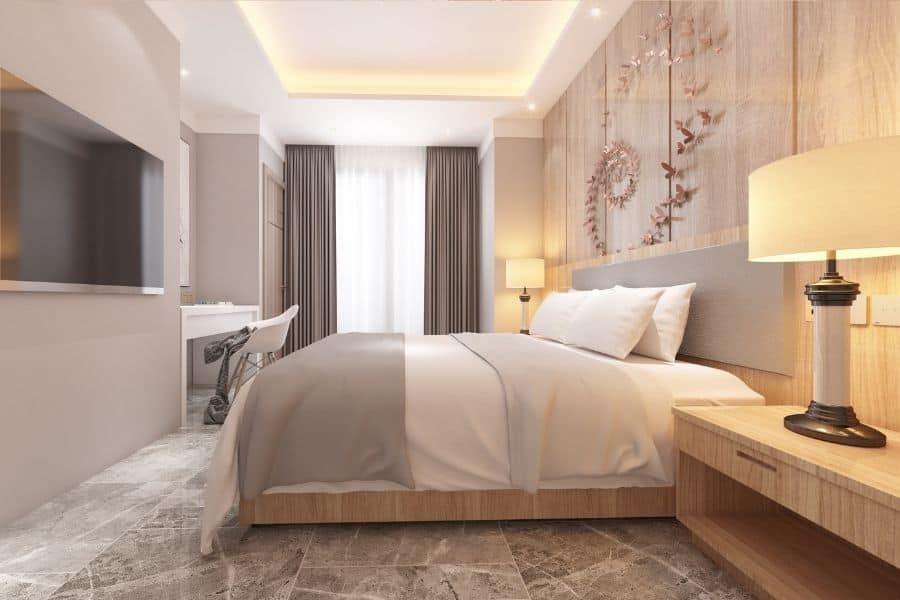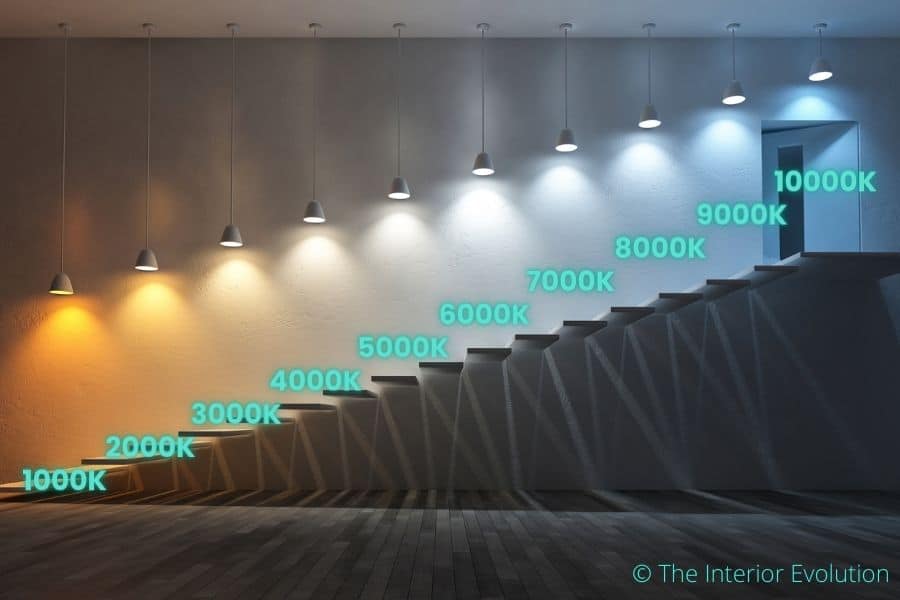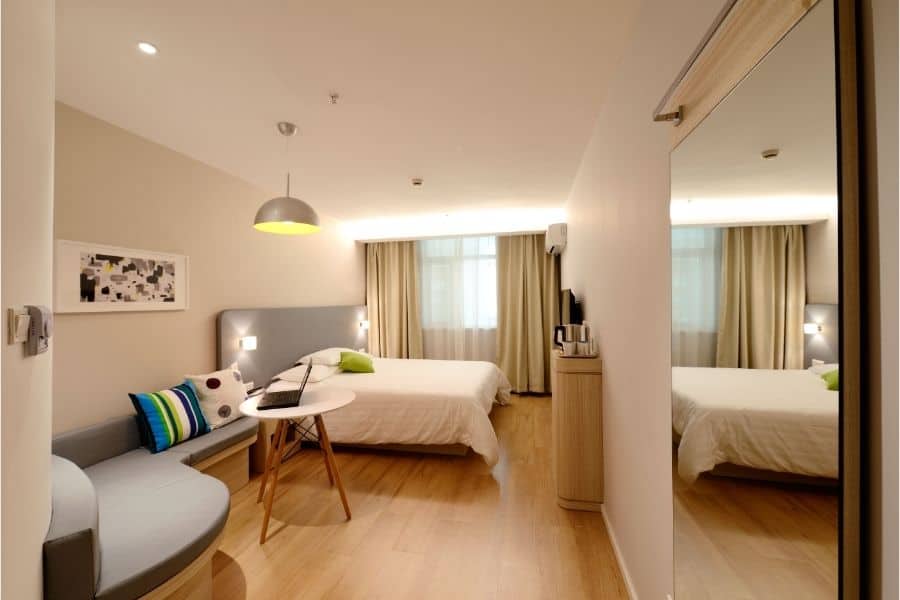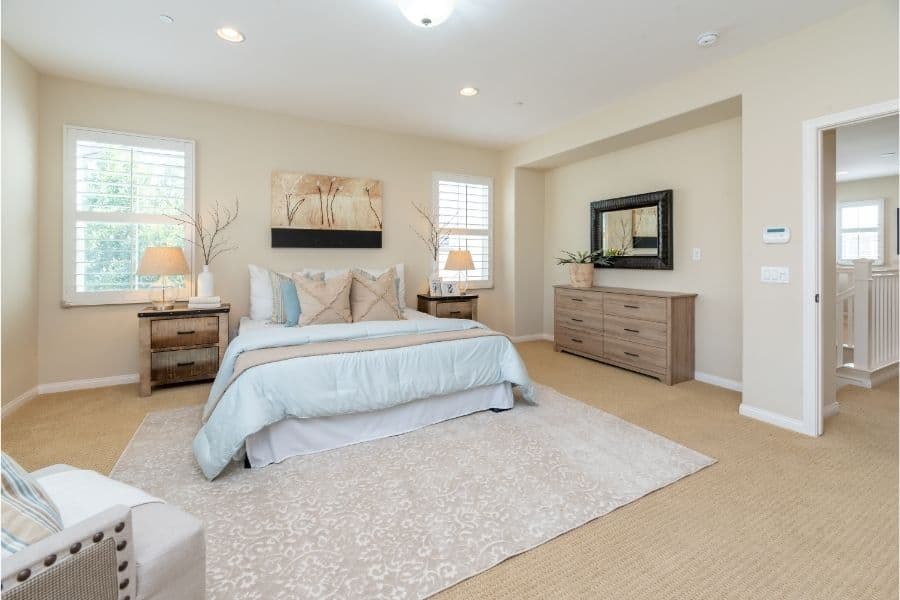When you consider LED bulbs, they come in a wide range of color temperatures, each of them perfect for specific applications. So, if you’re wondering, which is more suitable for your home between 4000K vs 5000K lighting, in this article, we have discussed all this and more.

Understanding Color Temperatures
Very commonly used today, LED (light-emitting diode) bulbs are highly energy-efficient and can last for up to 2 decades. However, when shopping for LED bulbs, you may have heard the terms “warm white”, “cool white”, “daylight”, “neutral”, etc., which can be rather bewildering.
These terms refer to the color and the light temperatures of various LED bulbs available on the Kelvin (K) temperature scale. The color temperature of the LED bulb is its warmness or coolness, which is measured in Kelvin units i.e., between 1000K-10000K.
The color of the light is yellow and warm when the Kelvin numbers are lower, while as the Kelvin numbers increase, the light becomes cooler, brighter and whiter.
The type of lighting you want in your home depends on which part of your home and the area of the room you want to install it in. For instance, if you want warm, soft lighting in your bedroom, then 2000K-3000K lighting will be the best, whereas you want your study to be brighter, so you’ll need 5000K-6000K “bright daylight” LED bulbs.
Related Post:
How Many Watts per Square Foot for Lighting Any Space Properly?
4000K vs 5000K Lighting

When you look at 4000K and 5000K lighting, they are so close to one another on the Kelvin scale, which makes it extremely difficult to distinguish the difference between the two at a glance, unless you make use of a photometer.
However, if you observe the lighting for a longer time, you will be able to notice the difference. And, if you’re confused between 4000K and 5000K lighting and don’t know which is best for your home lighting needs, in this section, we have discussed this in detail.
4000K Lighting

The color temperature range for 4000K LEDs falls between warm white i.e., 2700K-3000K and daylight white i.e., 5000K-6000K. It is a neutral white, where the color range is balanced without being too blue or too yellow.
At 4000K, the lights start becoming whiter rather than yellow, which means that although they may look white, they have a yellowish tinge.
4000K lights are white and clean, resembling natural daylight, which is why these lights are commonly used by people in spaces where they want the light to crisp and clear, without it being too stark or blue. 4000K lights are ideal for places such as commercial spaces, offices, schools, lobbies, kitchens and garages.
4000K lights are commonly used in:
5000K Lighting

5000K lights are typically in the blue-white color temperature range and provide bright and crisp lighting. These lights have practically no visible yellow light and are the point where the light is neutral or close to perfect white light with the same clarity as real sunlight.
The crisp 5000K light offers color contrast, which enables even very small details to stand out clearly and is the best when you want to view the real colors of objects. This is the reason why 5000K lights are used in art galleries, showrooms, workplaces, hospitals, factories, warehouses and workshops. In homes, 5000K lights are best for basements, bathrooms and the study.
Some of the places where 5000K lights are commonly used in include:
Is There a Big Difference between 4000K and 5000K?
When you consider 4000K and 5000K lighting, the main difference between them is the color temperatures of both. As compared to 5000K lights, 4000K lights are warmer and less white. However, both these lights are points on the Kelvin scale where they are more white than yellow.
Is 4000 Kelvin Warm White?
The color temperature is a slightly warm white at 4000K. It is the temperature when the light shifts from warm to cool. The 4000K bulb produces a cool-toned white color that provides a little warm effect, which makes them ideal for use in the kitchen.
4000K bulbs are a bit warm, making them well-suited for rooms that need a relaxing environment such as the living room, without making you sleepy. 4000K lighting is also suitable for the porch, stairwells and hallways.
Is 5000K Too Bright for the Living Room?

5000K bulbs are quite white and help to brighten any room. However, you want your living room to have a more relaxed ambiance and so, you should choose natural white light in a soft, neutral range.
Typically, the best temperature color range for living rooms ranges between 2500K to 3000K. Avoid using 5000K bulbs for living rooms because this will make them too bright and white.
Is 5000K Too Bright for Bathroom?

While you may prefer softer lighting in your bathroom; however, it may not be very good if you want to do your makeup or shave. Cooler light will ensure that you’re able to see what you will look like in bright daylight. And so, typically for the bathroom, it is recommended to use lighting in the color temperature range between 3,000K and 5,000K.
In fact, 5000K produces white, bright daylight-colored light that ensures that the lighting in your bathroom is clear and bright. You could opt for a 5000K light for your main bathroom fixture and if you have a bathtub, you could create a warm ambiance by adding a separate 2700K light.
To conclude, now that you can distinguish between 4000K vs 5000K lighting, you can use both of them effectively according to the lighting requirements of your home for the perfect ambiance.

